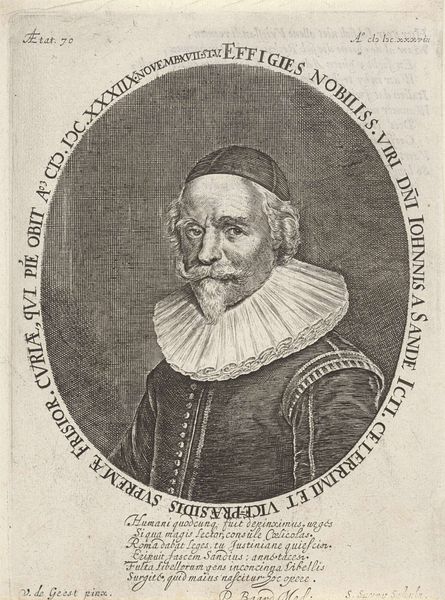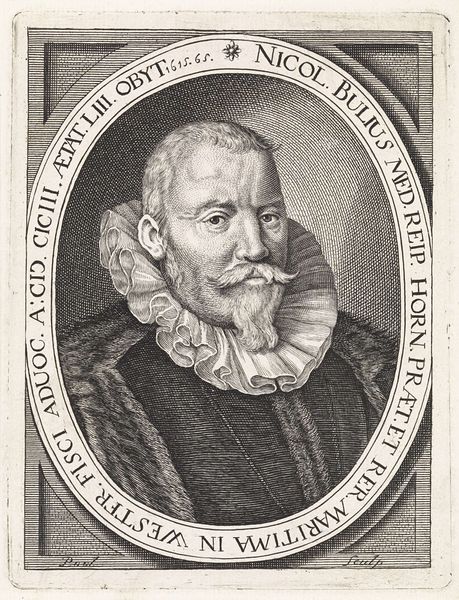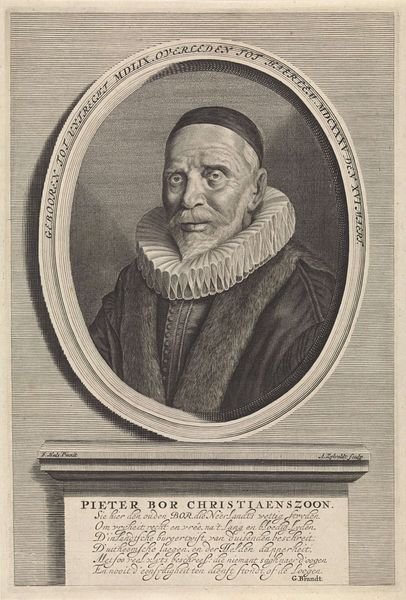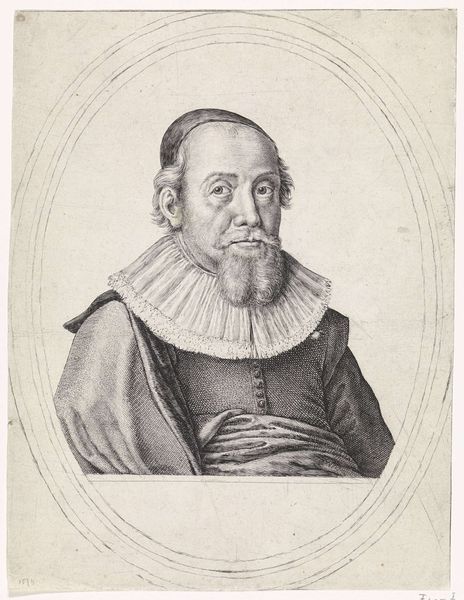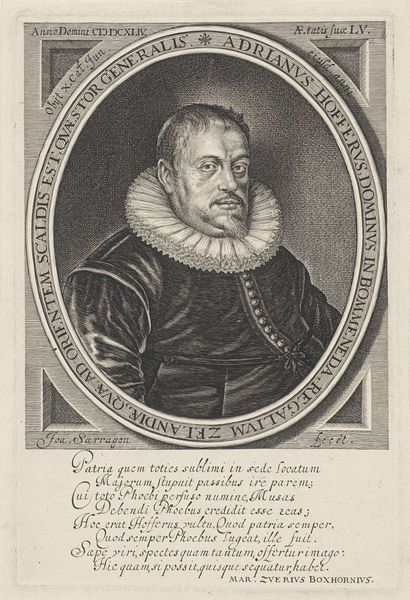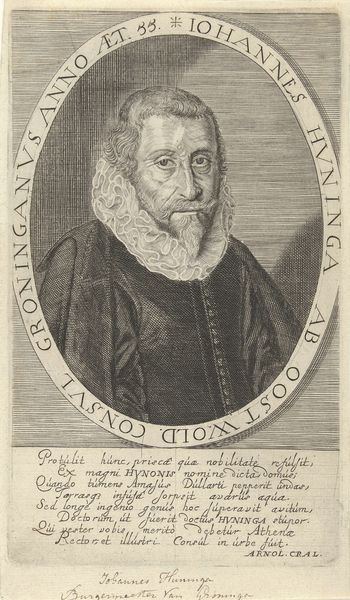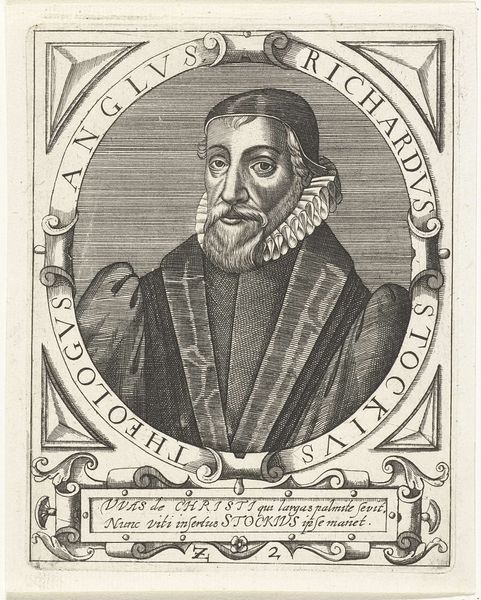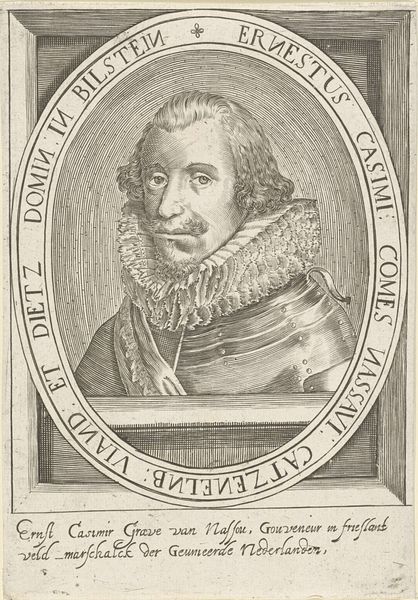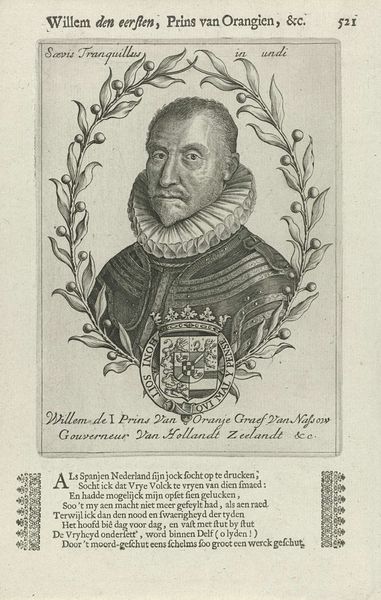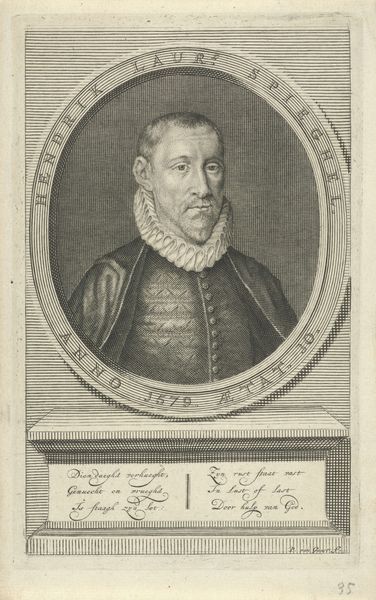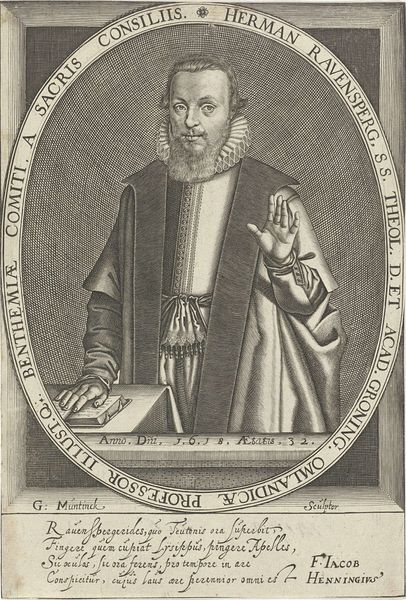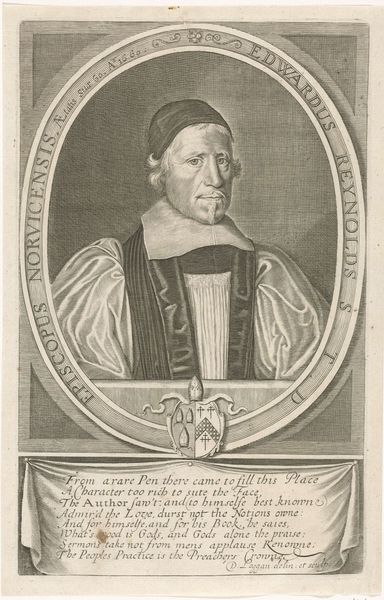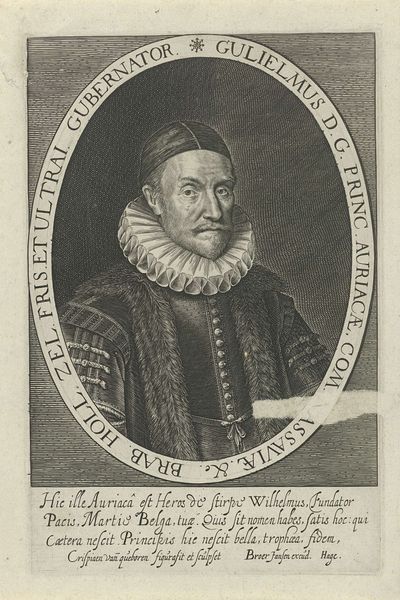
print, engraving
#
portrait
#
baroque
# print
#
engraving
#
realism
Dimensions: height 240 mm, width 141 mm
Copyright: Rijks Museum: Open Domain
Curator: Here we have a print, "Portret van Johannes Becius," created sometime between 1626 and 1640, and attributed to Dirk van Hoogstraten. It’s an engraving. Editor: It feels almost austere. That stark contrast of the engraving emphasizing every line and wrinkle on his face. He seems like a man not given to frivolous pursuits, definitely someone you'd want running a library. Curator: Indeed. Engravings such as this one were often commissioned portraits serving to document and disseminate the image of prominent figures. It allowed for a degree of replication, making Becius, here depicted, as a scholar, pastor, and librarian, more accessible to a wider public. Notice the intricate text framing his image. It gives clues about how he was esteemed by his contemporaries. Editor: It does provide a richness around the more humble figure, which balances his severe gaze and austere black robes. This contrast, though, gets me thinking about the economics of it. You said these were accessible. Who had access to them? How did the method of print affect art-making then, both as labor, as art, and for consumers? I can feel the hand of the artisan who engraved it! Curator: An excellent question. The process involved specialized labor and access to tools and materials, positioning printmaking within specific social and economic networks. But relative to an original oil painting, the print was a democratizing force, facilitating the spread of images and ideas. While we see Johannes Becius the man depicted, the very labor of those that disseminated his image is worth appreciating. It does raise a question as to whose portraiture mattered, what the labor was involved, and for whom it was produced. Editor: Right, like, how much would the engraver have collaborated with Hoogstraten, versus asserting their agency, to determine Becius' depiction? And what did the text do? It both elevated him, but also perhaps… confined him? I like looking closely, past what appears straightforward. It all gets so wonderfully knotty. Curator: Absolutely. It becomes an invitation to question the values inherent in portraiture, printing processes, and dissemination. Editor: I’ll not look at Baroque portraits the same way again, especially remembering the hands and lives of those, famous and not, in the process.
Comments
No comments
Be the first to comment and join the conversation on the ultimate creative platform.
